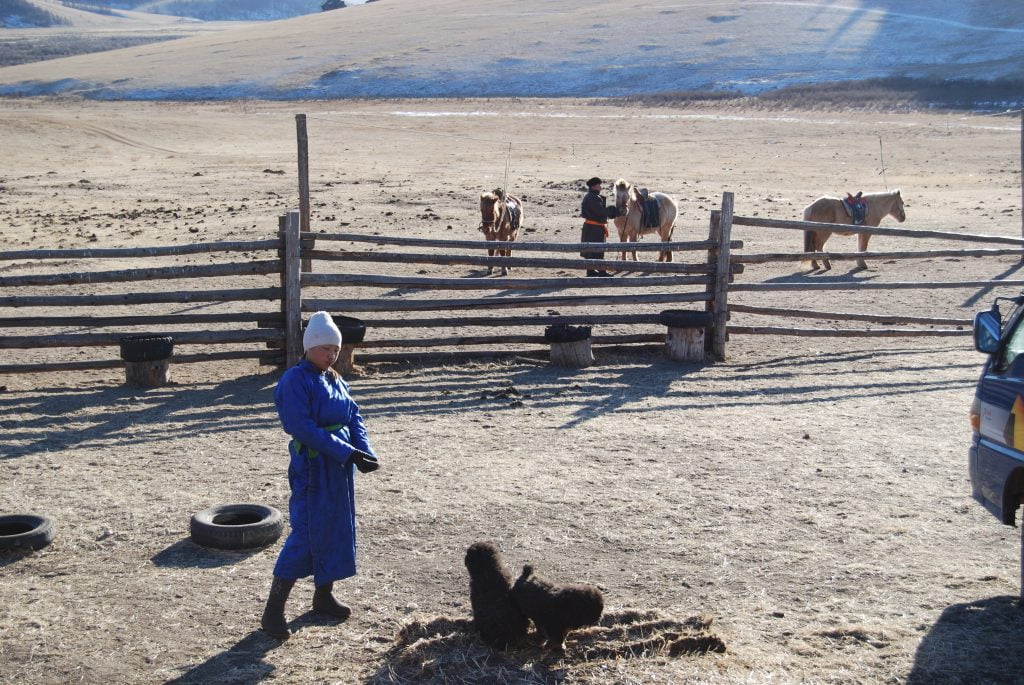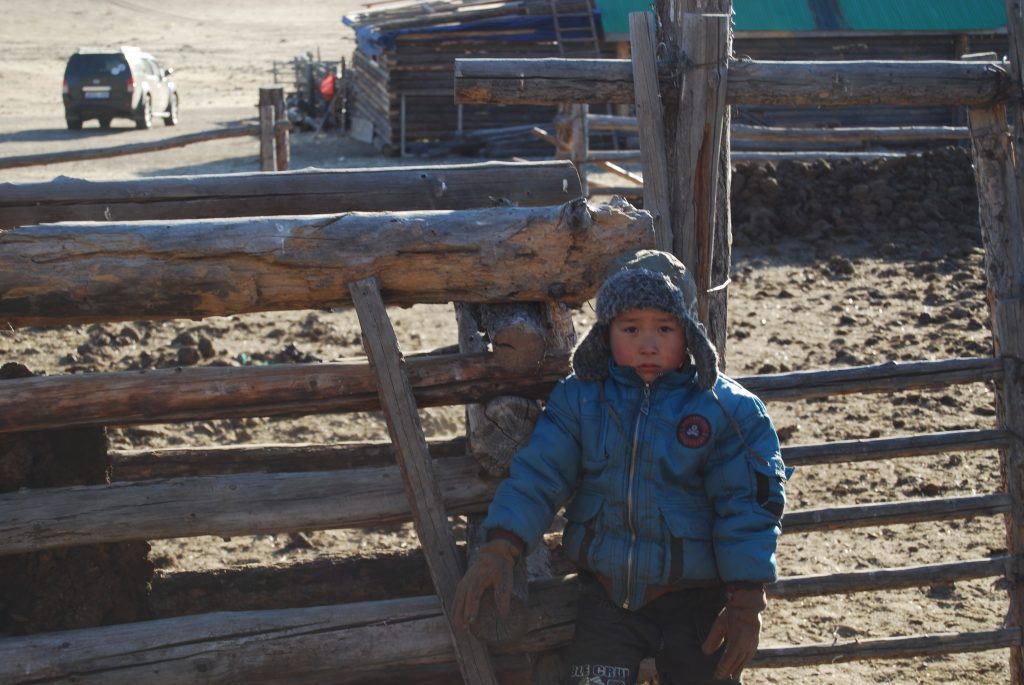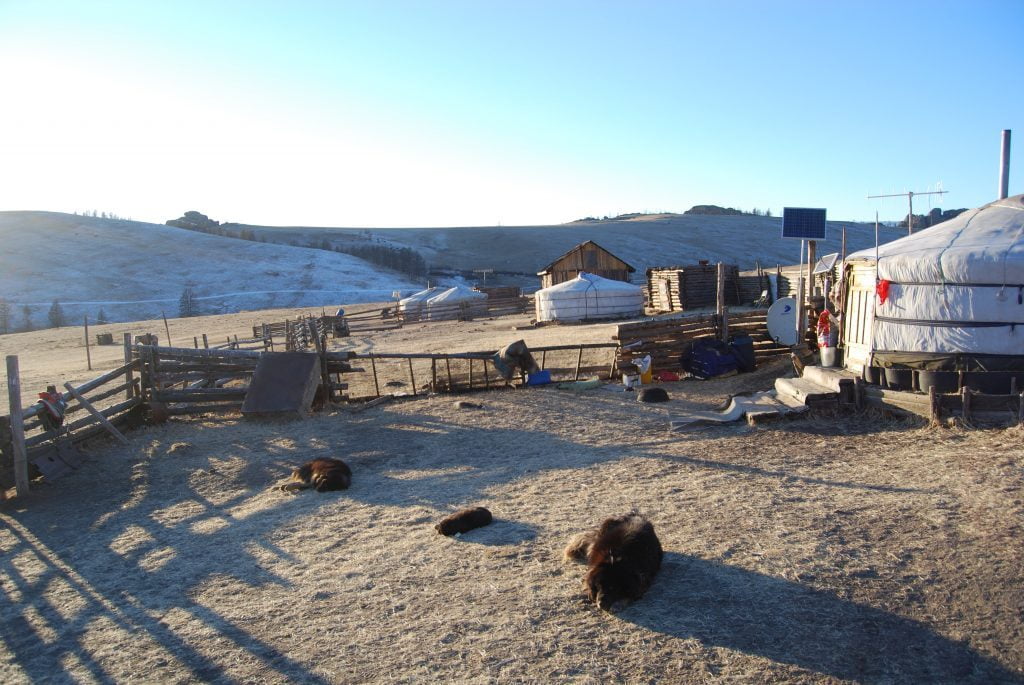The Mongolian steppe is a vast temperate grassland that covers over 887,000 square kilometers. This vast area is spread throughout Mongolia, Inner Mongolia and Northeastern China. As a result, the Mongolian steppe is the foundation that Mongolian culture has been been built on.
Indeed, the horse culture of Mongolia has existed for millennia and their traditional house is still the “ger”. Additionally, since the steppe crosses into China, it is also known as the Mongolian-Manchurian steppe.
Genghis Khan Statue Complex
The Genghis Khan Statue Complex is located about 50 kilometers east of Ulaanbaatar. Therefore, it would be our first stop of the day before continuing eastwards into the great blue yonder.
The central aspect of the statue complex is the Genghis Khan Equestrian Statue. Completed in 2008, the statue is 40 meters tall and it would cost approximately $4,000,000 to build. Additionally, the equestrian statue faces eastwards towards the birthplace of Genghis Khan.
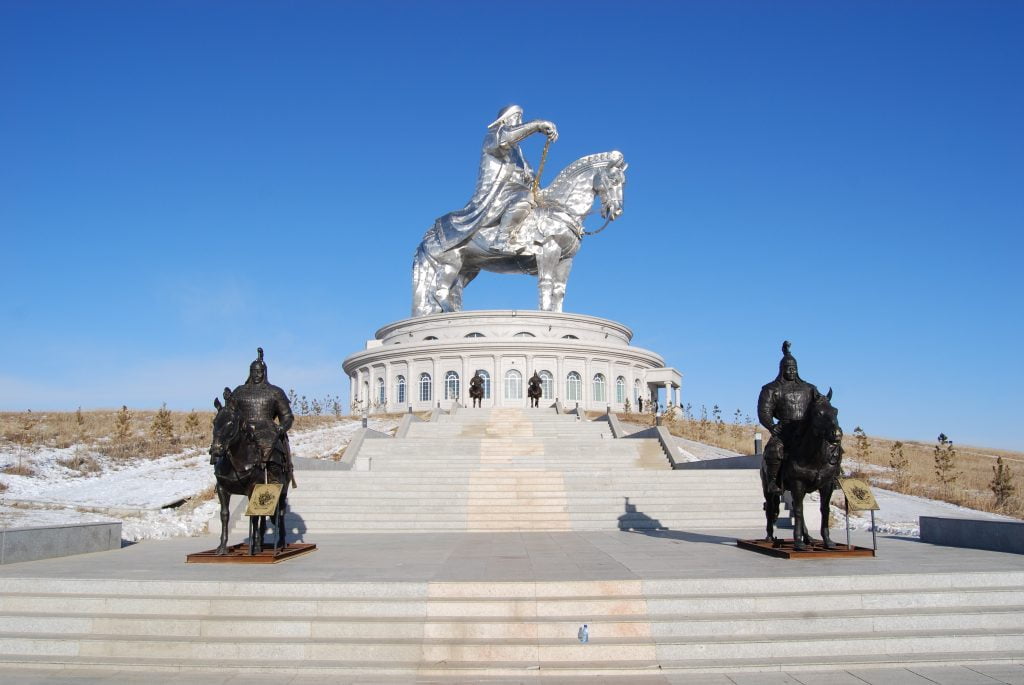
The majestic statue also has an observation deck that can be reached by an internal stairway. From the secret passage way we emerged over the horses shoulders between the rider and the horse’s head.
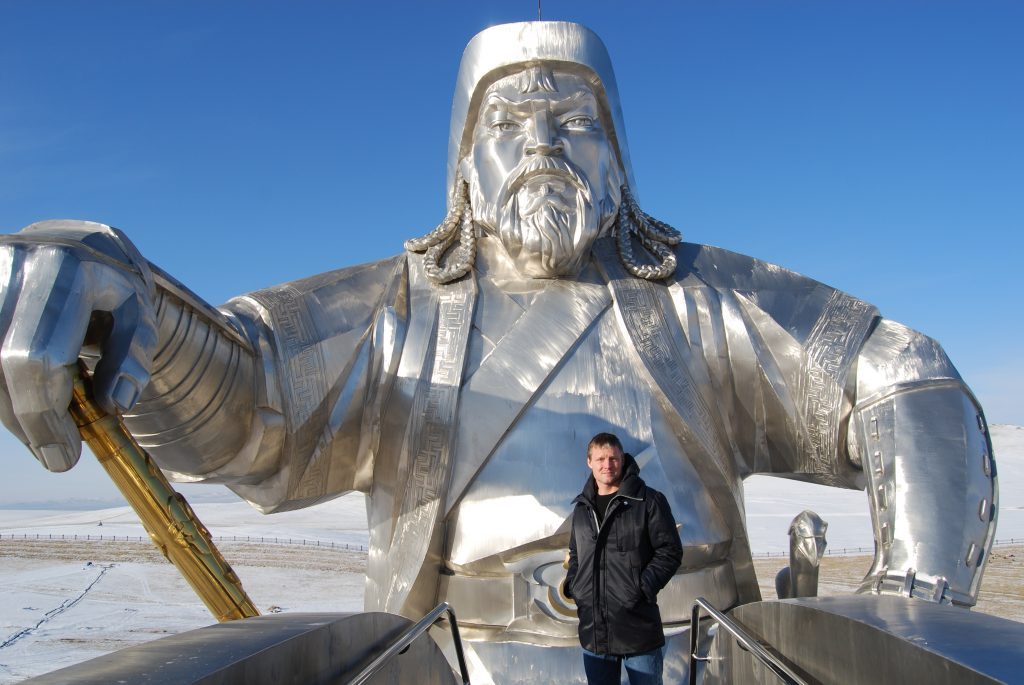
By looking over the horse’s shoulders it is possible to see the birthplace of Genghis Khan across the mountains in the far distance.
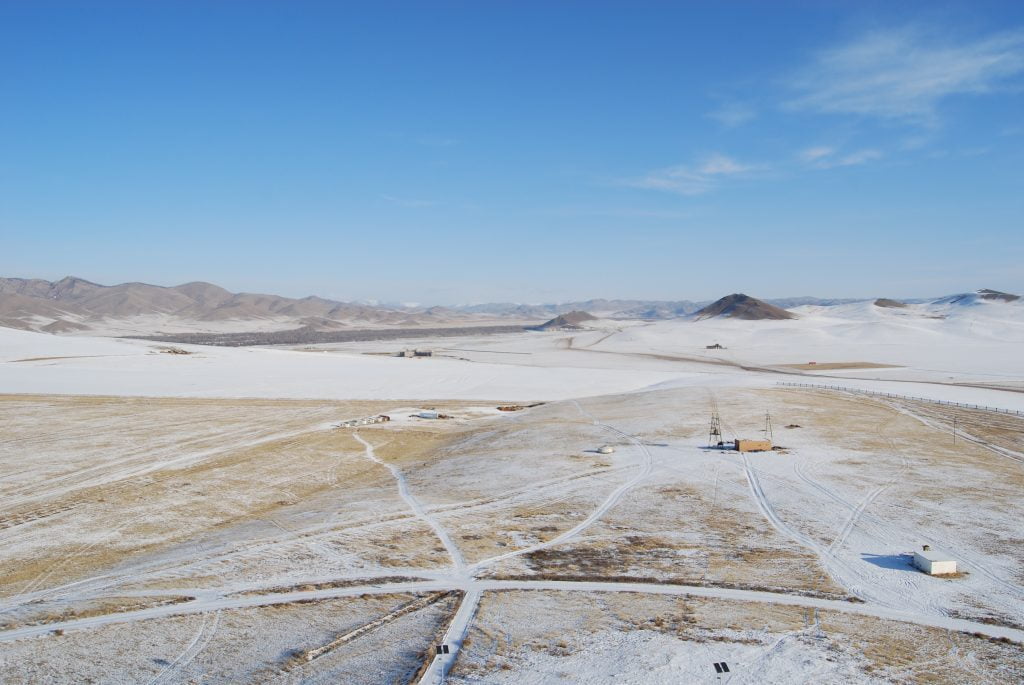
The Genghis Khan Statue Complex is constructed at the location where Genghis Khan is believed to have found a golden horse whip. Additionally, the complex consists of 36 columns, each column represents one of the khans that ruled the Mongol Empire – from Genghis Khan to Ligdan Khan.
Furthermore, within the complex is a small but significant cultural museum. Included in the museum is a monumental boot that pays tribute to the traditional footwear of the Mongols. They claim that it is the “largest shoe in the world”.
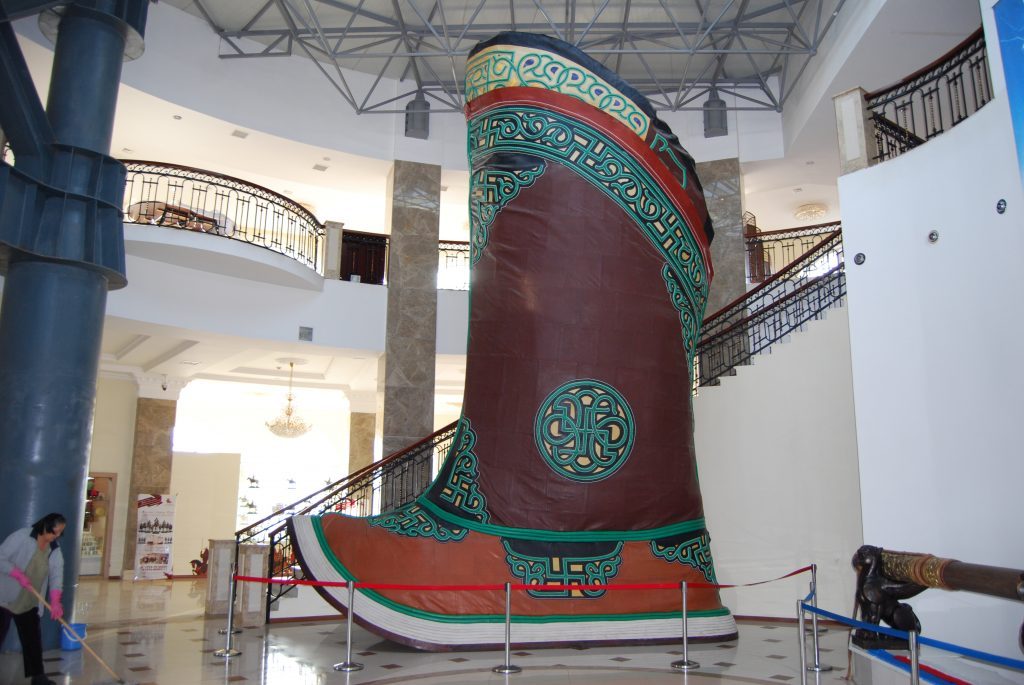
Additionally, the museum featured some of the traditional clothing worn by the Mongol warriors.
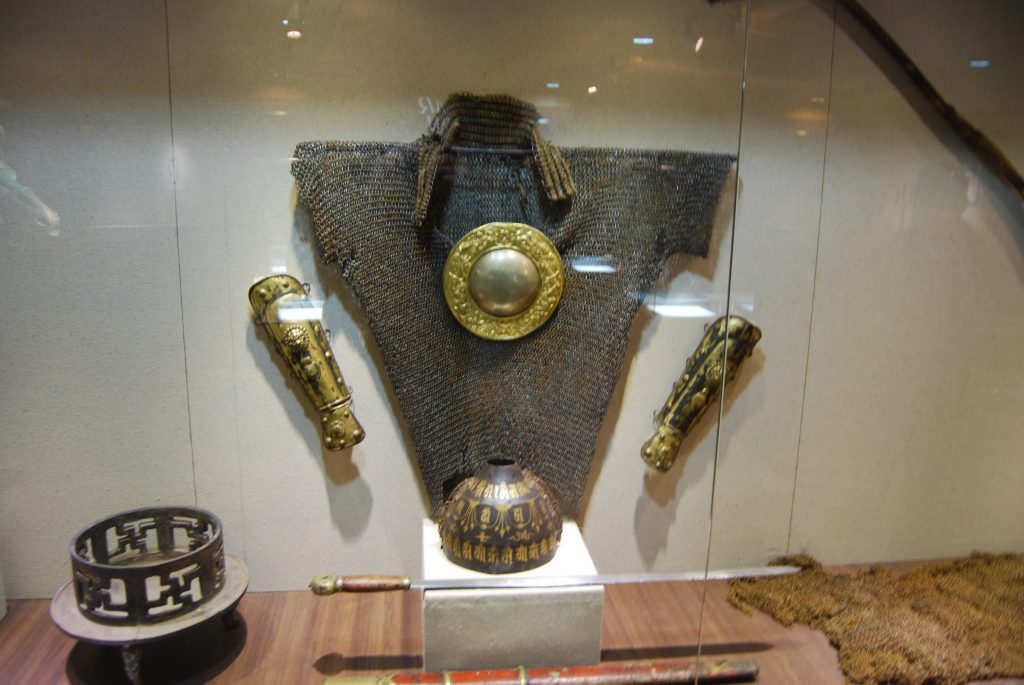
The Traditional Mongolian Horse
From the complex we would continue heading eastwards towards the birthplace of Genghis Khan. One of the prominent features of the Mongolian steppe is the Mongolian horse. The Mongolian horse is legendary and it is the same breed of horse that the Mongol warriors rode across Asia to threaten the borders of Europe.
Although the Mongol horse is diminutive, it is not a pony. In fact, the horse provided the Mongol warriors with the advantage of quickness and agility which they used very effectively.
The horses are found all over the Mongolian steppe and Mongolian nomads own large herds of them. However, they also roam free throughout the vast grasslands. Indeed, the population of Mongolian horses in Mongolia is larger than the population of the people.
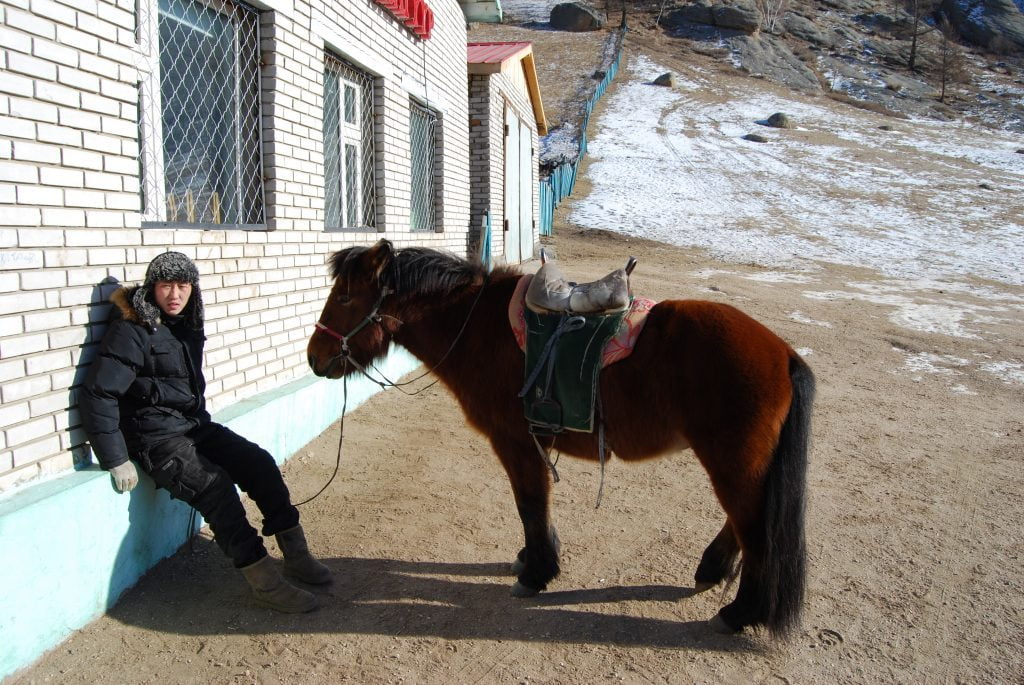
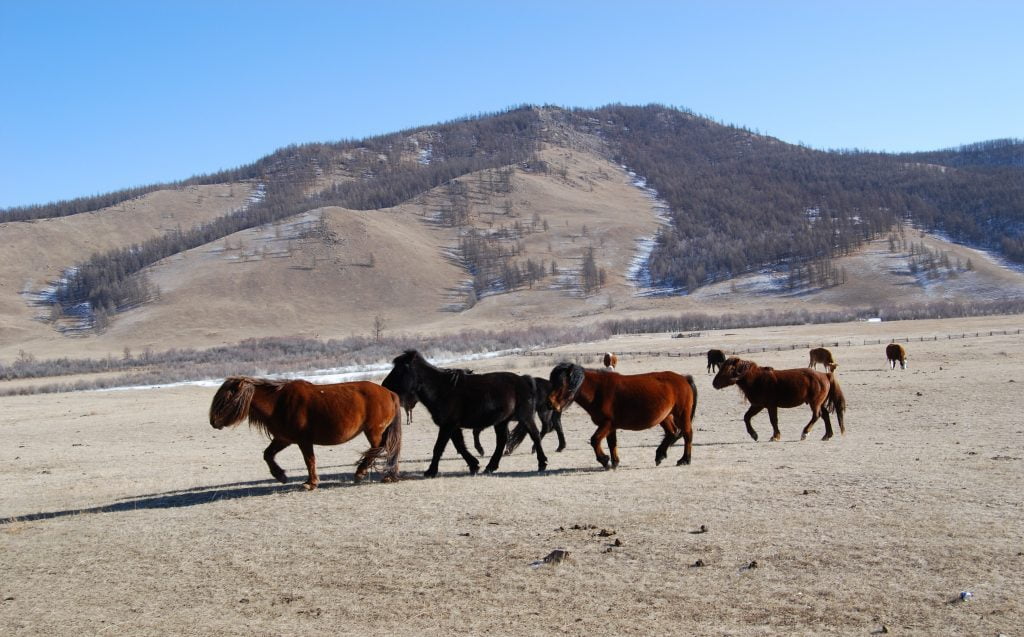
Entering the Mongolian Steppe
My guide pointed out that we would now be entering the Mongolian Steppe. But first we would perform a ritual at the Mongolian ceremonial cairn on the side of the road. For luck, we gathered a few rocks and placed them on the pile and then walked around the ceremonial cairn 3 times. As a result, we would be protected from danger as we traveled through the vast wilderness.
Furthermore, the Buddhist prayer flags posted on top of the cairn illuminate the national religion of Mongolia which is Tibetan Buddhism.
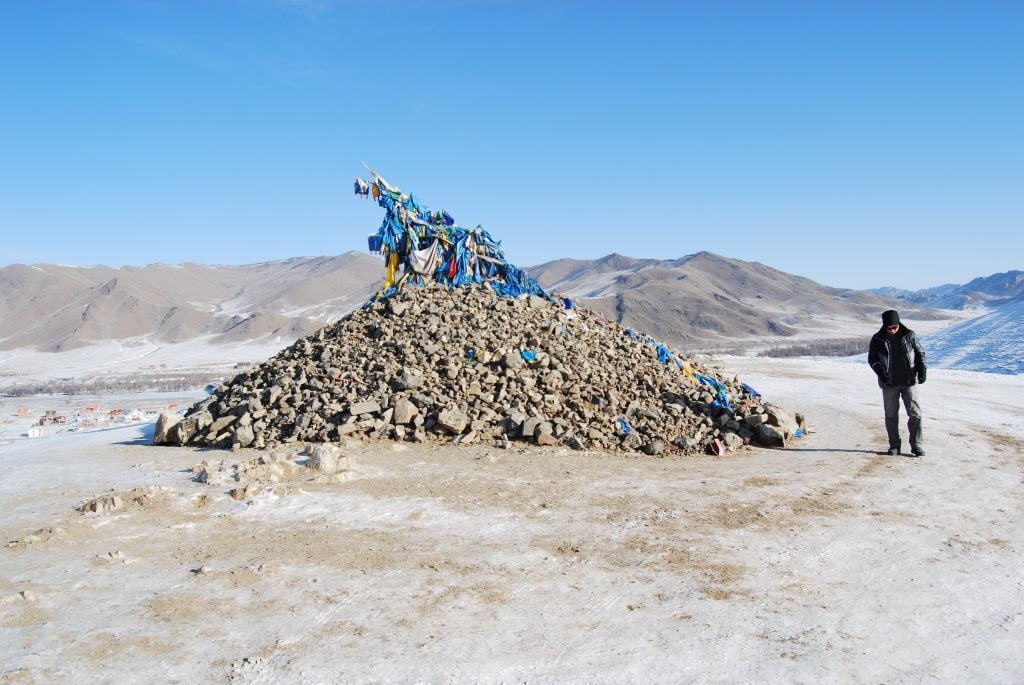
After performing the ritual we set out into the steppe. Our destination was about 150 kilometers away. We would be spending the afternoon with a nomadic herdsman and his family on the Mongolian steppe.
The steppe now began to open up in front of us and reveal itself. Additionally, it was the middle of winter so the landscape was frozen solid.
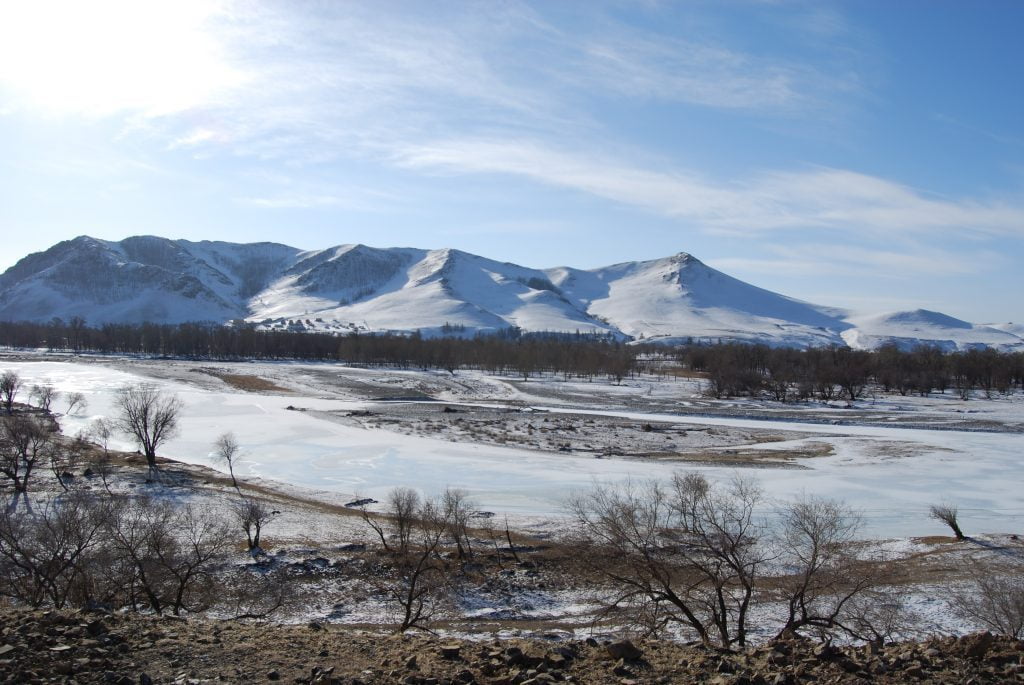
Mystical Rock Formations on the Mongolian Steppe
An astounding aspect of the Mongolian steppe is the rock formations. It seemed that practically every rock was created with divine inspiration. As a result, they looked like turtles, dinosaurs or the eye of an oracle.


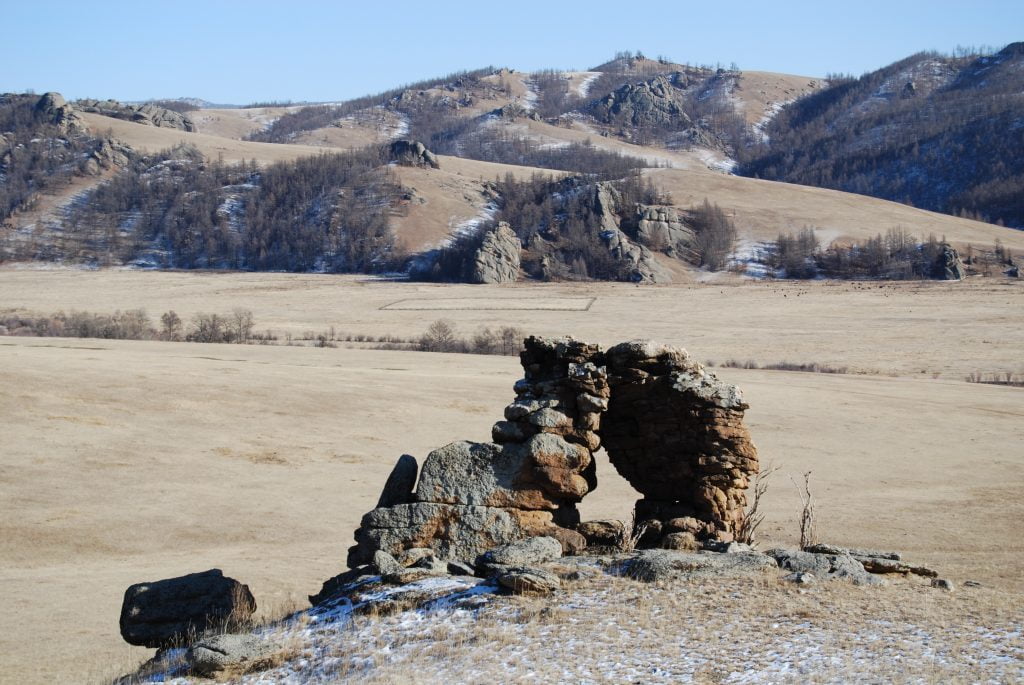
Nomads on the Mongolian Steppe
Our final destination was a nomadic ranch in the far reaches of the steppe. Our host was a bit of a legendary figure among the nomads. For example, one time when out on the steppe in mid winter he was crossing a frozen river and fell through the ice. However, he still made it home the next day.
Needless to say our host was a very proud man. Although the ranch had recently seen some modern improvements, it was only a couple years ago that they had all lived in traditional gers.

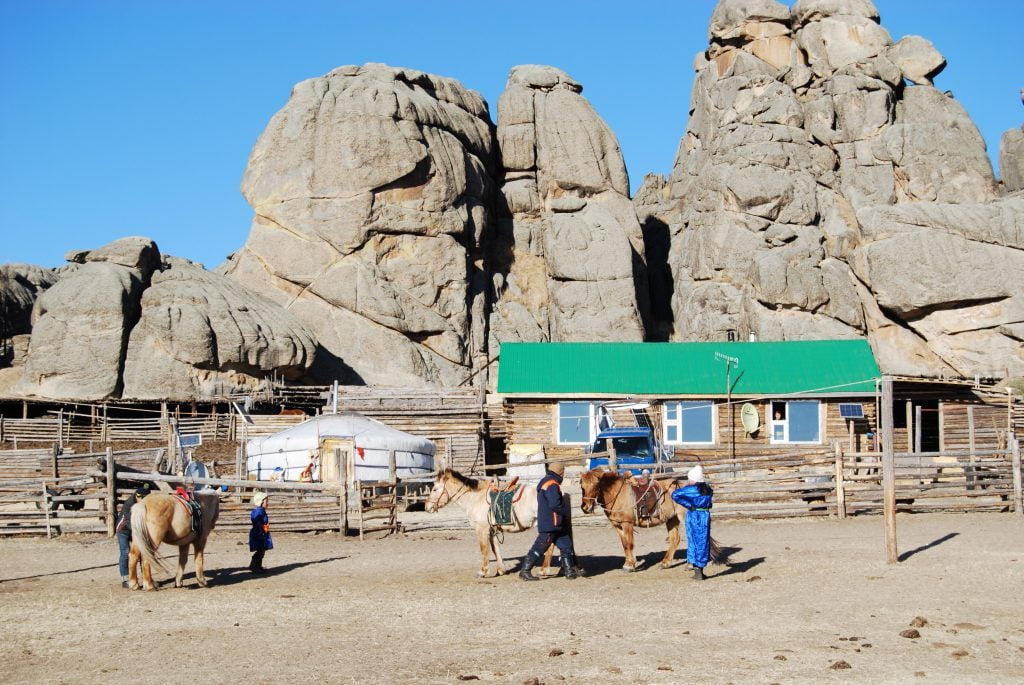
Shortly after our arrival they served beef stew and some dumplings. It was very simple fare although it was very good. I was slightly nervous about eating meat for lunch because the nomads eat horse meat as a main staple of their diet. However, my guide explained that horse meat tasted much more gamey and lean.
Indeed, the meat we were eating tasted like beef. It was also helpful to note that there were some cattle outside.

During lunch I could not help but notice that there was a wolf skin hanging on the wall in the corner. My guide explained that Mongolian wolves still existed here. Additionally, his other occupation was as a hunting guide for those who wished to shoot wolves. Although he mentioned that the place they went hunting was actually farther to the east than our current location.
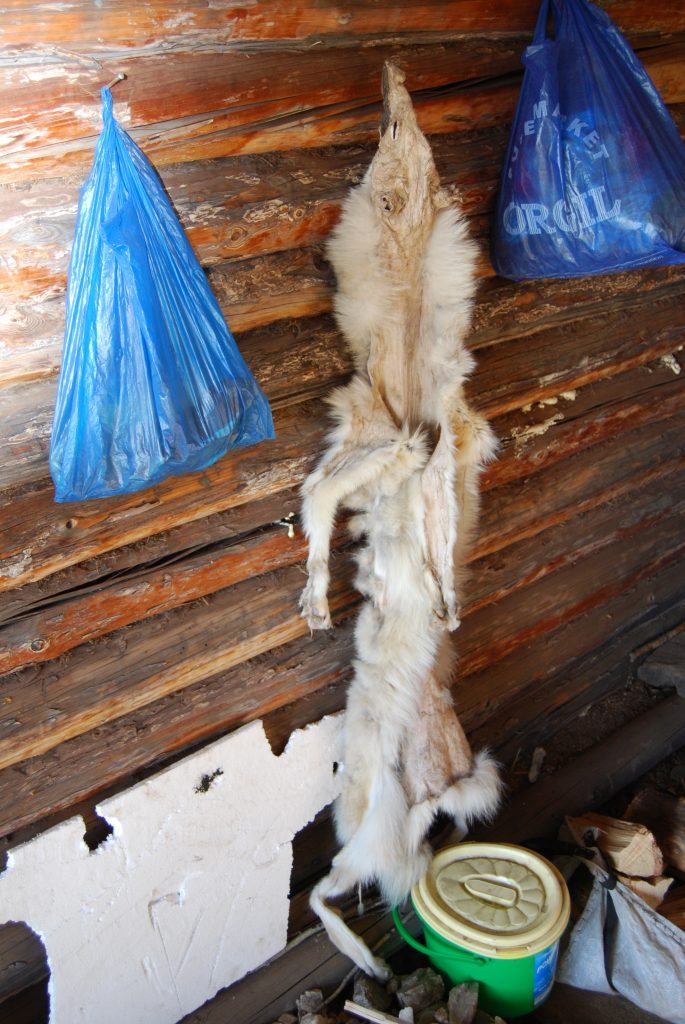
Horseback Riding on the Mongolian Steppe
After lunch my host took me out horseback riding. For me, this was the highlight of the trip because the sun was now low on the horizon and there would be some great photo opportunities.

In terms of goats, cattle and Mongolian horses our host was rather well off and we passed his herds while we were horseback riding on the Mongolian steppe.
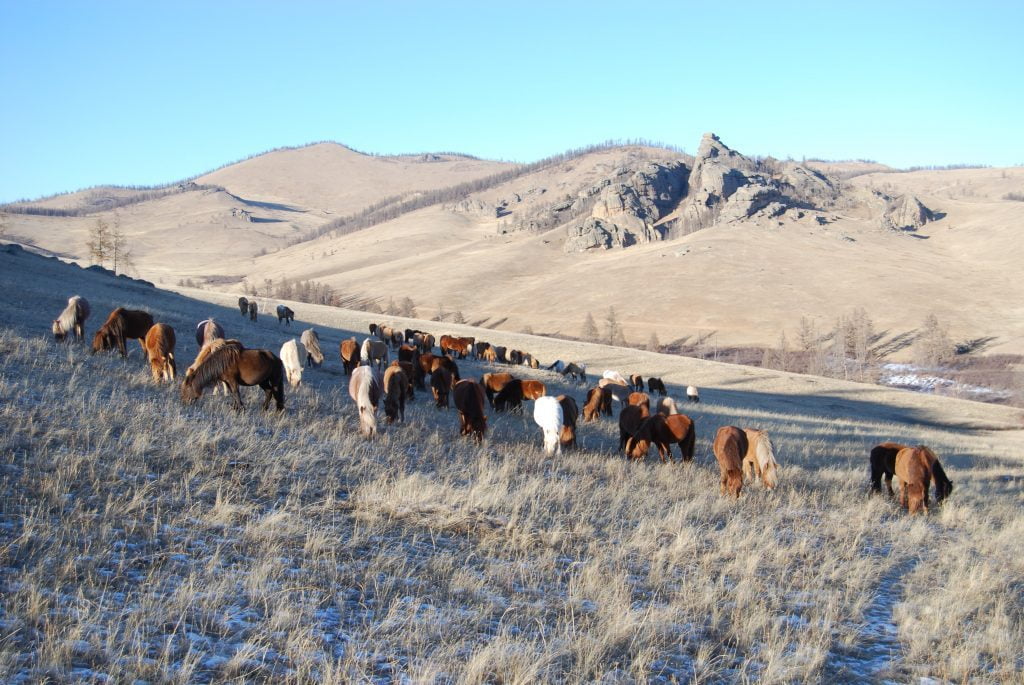

Our host was also a pretty good photographer and with a little coaching (hand signals) he managed to take a pretty good photo of me.
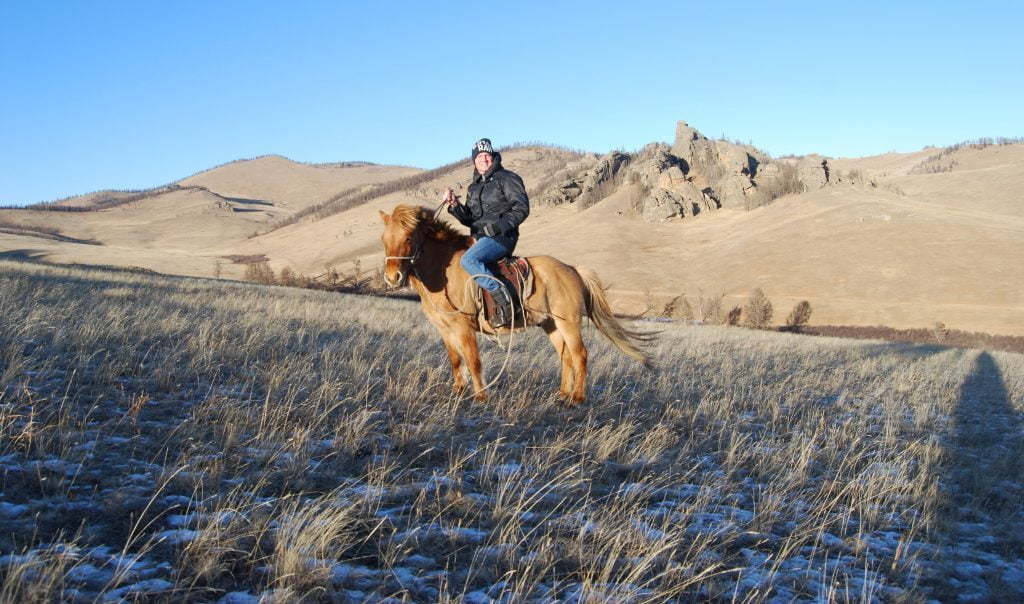
Nomadic Life on the Mongolian Steppe
Life on the Mongolian steppe is still pretty rustic for the locals. There is a power generator for basic electrical needs, but there is no plumbing. Additionally, water is hard to come by and it must be drawn from the local river (which is far away).
During the summer months it is hauled in buckets and barrels. However, during the winter the river water is frozen. Therefore, it is necessary to transport the chunks of ice back to the ranch and melt them as needed.
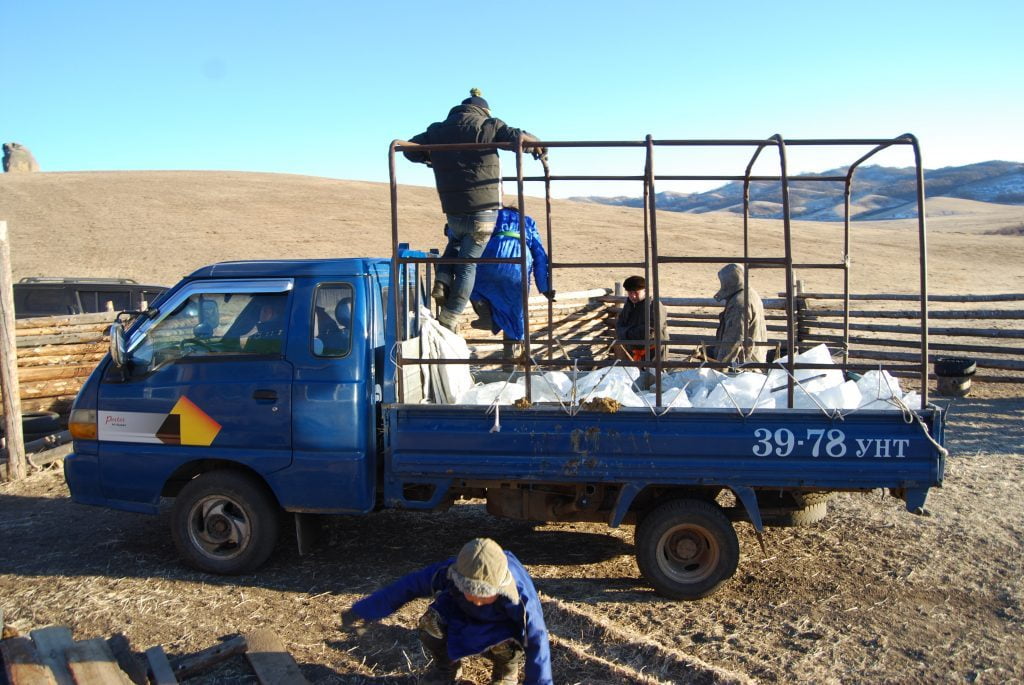

Additional Photos
